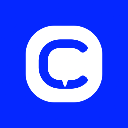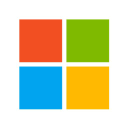Here’s How and Why you Should Go For a Call Center Dashboards (+ Top Tools)
When running a thriving call center, having access to relevant and timely information is crucial. Call center dashboards give managers an at-a-glance view of key performance indicators (KPIs) and other important metrics, allowing them to make data-driven decisions and take corrective actions where necessary.
Discover all the benefits of call center dashboards and explore some key metrics every call center should be tracking. Here are some helpful tips on designing effective call center dashboards, driving better results, and improving customer support and satisfaction.
What is a dashboard in a call center?
A call center dashboard is a graphical user interface that provides real-time or near-real-time information about the call center’s performance and operations.
A call center dashboard will display a variety of metrics, including:
- call volume;
- wait time;
- call abandonment rate;
- average handle time;
- agent performance.
As a simple and efficient way for call center managers to monitor and analyze performance, call center dashboards enable data-driven decision-making and make it easier to identify areas that need improvement, staffing needs, and ways to improve the customer experience.
With a call center dashboard, you can easily customize its interface to meet your specific needs. For instance, if you run a sales-focused call center, you can want a dashboard that displays sales data. Alternatively, if you have a customer-focused call center, you may want a dashboard that shows customer satisfaction ratings and customer service metrics.
Using a dashboard will make all the difference in helping you manage your call center, optimizing operations, improving customer satisfaction, and boosting employee performance.
What are the 6 benefits of call center dashboards?
Call center dashboards provide many benefits to call center managers and agents. Here are some of the key benefits:
Real-time data
Call center dashboards provide real-time data by integrating with various systems and tools used in the call center, such as:
- automatic Call Distributors (ACDs);
- customer Relationship Management (CRM) software;
- workforce management (WFM) systems.
These systems collect and store data on call center operations, including call volumes, wait times, call handling times, and agent performance metrics.
The call center dashboard then uses APIs or other data integration tools to extract this data in real time and present it in a user-friendly format, such as graphs, charts, or tables. This allows managers to monitor key performance indicators (KPIs) and other metrics in real time and take immediate action to address any issues.
Increased visibility
By providing a clear overview of key performance indicators (KPIs), call center dashboards increase visibility into call center operations, making it easier to identify areas for improvement.
Your call center dashboard allows you to access critical data related to any process. As a manager, you can view this data from a desktop, tablet, or smartphone to maximize your on-the-go productivity.
Improved decision-making
Call center dashboards can improve decision-making by giving call center managers access to accurate and up-to-date information on key performance metrics and other important data.
With call center dashboards, managers can easily track and monitor KPIs such as:
- average handle time (AHT);
- first call resolution (FCR);
- customer satisfaction scores (CSAT).
By keeping a close eye on these metrics, managers can quickly identify any issues or trends and take action to address them before they become more significant problems.
Enhanced efficiency
By identifying areas for improvement, call center dashboards can help managers optimize operations, increase efficiency, and reduce costs.
Not only can call center dashboards help streamline operations, but they also help managers save an incredible amount of time sifting through data. That means they can enjoy easy and immediate access to the relevant customer data and make appropriate decisions to resolve any surfacing issue.
Improved agent performance
Call center dashboards can help agents understand how their performance impacts the call center’s overall performance and provide them with actionable insights to improve their performance.
By tracking key performance metrics such as AHT, FCR, and CSAT, agents can see how they perform compared to their peers and work to improve their performance where necessary.
Call center dashboards can also be used to set clear, measurable goals for agents and track their progress. This helps agents focus on meeting their targets and improving their performance over time.
Better customer experience
By providing managers with real-time data, call center dashboards help them identify and address customer service issues in a timely manner, improving the customer experience.
This data allows managers to identify areas where customers may be experiencing issues and take corrective action quickly, reducing the likelihood of bottlenecks and other inefficiencies that can negatively impact the customer experience.
5 different types of call center dashboards
Several types of call center dashboards are designed to provide a specific set of metrics and insights. Here are some of the most common types:
1- Real-time dashboards
Real-time dashboards provide up-to-the-minute data on call center performance, including call volume, wait time, and agent availability. These dashboards are designed to help managers quickly identify issues and take action to address them.
2- Historical dashboards
Historical dashboards provide a view of call center performance over time, allowing managers to track trends and identify patterns. This can be useful for identifying areas that need improvement and making long-term strategic decisions.
3- Agent performance dashboards
Agent performance dashboards provide metrics on individual agent performance, such as call volume, call duration, and customer satisfaction ratings. These dashboards can help managers identify top-performing agents and areas where individual agents may need additional training or coaching.
4- Customer satisfaction dashboards
Customer satisfaction dashboards provide metrics on customer satisfaction levels, including customer ratings and feedback. These dashboards can help managers identify areas where the call center may fail to meet customer expectations.
5- Financial dashboards
Financial dashboards provide metrics on the cost of running the call center, including cost per call, cost per agent, and revenue generated. These dashboards can help managers optimize operations to reduce costs and increase profitability.
Top 5 call center dashboards to measure and boost your performance
Before you sift through the different call center dashboard options, make sure you understand how to choose one and how to identify your needs.
Criteria for selecting your call center dashboard
Choosing the best call center dashboard for your business can be challenging, as there are many factors to consider. Here are some critical steps to help you select the best call center dashboard:
- Identify your business goals: Determine the business goals and metrics most important to achieving those goals. For example, if your goal is to improve customer satisfaction, a customer satisfaction dashboard may be the best choice.
- Consider your audience: Who will use the dashboard, and what level of detail do they need? Managers may require more detailed metrics than agents, for instance.
- Seek out customization: Your dashboard should adapt to your specific needs. For example, you may want to add or remove some metrics or modify the layout.
- Evaluate the ease of use: You want an intuitive user interface, clear visualizations, and easy-to-manage controls.
- Consider integration with other systems: Your call center dashboard should integrate with other systems, such as your CRM or workforce management software.
- Evaluate the cost: Consider whether the benefits outweigh the cost.
Choosing the best call center dashboard for your business requires careful consideration of your business goals, audience, customization options, ease of use, integration with other systems, and cost.
By selecting the right dashboard, you can gain valuable insights into call center performance and make data-driven decisions to improve operations and customer satisfaction.
| Software | Main features | Pricing |
| CloudTalk |
|
Starts at $25 per user/month (billed annually) |
| Dialpad |
|
Starts at $15 per user/month (billed annually) |
| GoodData |
|
Start for free with a 30-day trial. Contact GoodTalk for pricing information. |
| Klipfolio |
|
Starts at $99/month |
| Power BI (Microsoft) |
|
Starts $13.70 per user/month |
CloudTalk
CloudTalk is a cloud-based call center dashboard designed to help businesses manage customer communication needs. It’s a complete solution for inbound and outbound calls, allowing companies to handle calls, messages, and emails in one platform.
CloudTalk offers a variety of features, including call routing, IVR (Interactive Voice Response), call recording, and integrations with popular CRMs such as Salesforce, Pipedrive, and HubSpot, allowing you to manage your customer interactions in one place.
One of the key benefits of CloudTalk is that it is cloud-based, meaning it can be accessed from anywhere with an internet connection. This makes it a flexible solution for businesses with remote workers or those with multiple locations.
Features
- Call queuing, recording, and forwarding
- Internal calls/Extensions
- Voicemail
- Call flow designer
- AutomatedCall Distribution (ACD)
- Interactive Voice Response (IVR)
- Call tagging and notes
- Custom fields
- Blacklist
- Power Dialer

CloudTalk
Dialpad
Dialpad is a cloud-based call center dashboard that provides a range of services, including voice and video conferencing, messaging, and phone systems.
It is designed to help businesses of all sizes improve their communication and collaboration, especially in remote or hybrid work environments.
Dialpad’s main features include HD video and audio conferencing, screen sharing, instant messaging, and a business phone system that can be used on desktops or mobile devices.
The platform also offers integrations with popular business tools such as Salesforce, Microsoft Office 365, and Google G Suite.
One of the key benefits of this call center dashboard is its AI-powered capabilities, which include automatic transcription, real-time language translation, and voice recognition. These features can help businesses save time and improve productivity by automating repetitive tasks.
Features
- AI contact center
- AI sales
- AI virtual agents
- AI CSAT
- Diapad AI
- Integrations & APIs
- AI Messaging
- AI Meetings

Dialpad
GoodData
GoodData is a cloud-based call center dashboard that provides businesses with data visualization and reporting tools.
GoodData’s main features include data preparation, data visualization, reporting, and dashboard creation. The platform integrates with a range of data sources, including cloud storage platforms such as Amazon Web Services and Google Cloud, as well as on-premises databases.
GoodData allows you to handle large and complex data sets via machine learning algorithms that analyze data and identify patterns, ultimately helping you make more informed decisions.
GoodData also provides a range of tools to help businesses collaborate and share insights with stakeholders. Users can create custom dashboards and reports and share them with team members or clients.
Features
- Direct queries
- Self-service data exploration
- Embeddable analytics
- Customizable dashboards
- Data stack integration
- Customizable ML/AI capabilities
- Collaboration tools
- Secured data
Klipfolio
Klipfolio is a cloud-based call center dashboard and data analytics platform that allows businesses to monitor and visualize their key performance indicators (KPIs) in real time.
One of the key features of Klipfolio is its ability to create customizable dashboards that allow users to track and analyze their data. Users can create custom widgets that display data in a variety of visual formats, such as gauges, charts, and tables.
Klipfolio also allows users to share their dashboards and reports with team members or clients in various ways, including email, PDFs, and web links.
Features
- Cloud-based dashboard and data analytics
- Integrates with spreadsheets, databases, and cloud-based services
- Customizable dashboards
- Provides pre-built KPI templates and dashboard examples
- Enables real-time monitoring
- Dashboards and reports sharing
- Collaboration tools for data analysis
Power BI (Microsoft)
Power BI is a business analytics and data visualization tool developed by Microsoft designed to help your call center analyze and visualize its data in an easy-to-understand format.
With Power BI, users can create interactive call center dashboards and reports that provide insights into their data. They can use a variety of visualization options, including charts, tables, maps, and graphs, to present their data in a visually compelling way. Users can also create custom visuals and share them with others.
Power BI also provides a range of collaboration tools that allow users to share their dashboards and reports with team members or clients. They can use features like data alerts and mobile access to stay up-to-date with the latest insights and trends.
Features
- Integrates with a variety of data sources
- Range of visualization options
- Create interactive dashboards and reports
- Provides collaboration tools
- Data alerts and mobile access
- AI-driven insights
- Security and compliance features
- Regular updates via Microsoft’s cloud-based service model

Power BI
How to best use call center dashboards in my business?
A call center dashboard is a powerful tool to help you make data-driven decisions to improve customer service operations. Here are some tips on how to best use a call center dashboard in your business:
- Define your key performance indicators (KPIs): Identify the most important metrics to your business.
- Monitor in real-time: Monitor your KPIs in real-time to ensure you meet your goals and identify any trends or patterns that may require attention.
- Analyze historical data: Identify trends and patterns to help you make strategic decisions about your customer service operations.
- Use visualizations: Use graphs, charts, and other visualizations to make analyzing and interpreting your data easier.
- Customize your dashboard: Make sure it includes the KPIs most relevant to your business and provides the data you need to make informed decisions.
- Share the data: Share data with other stakeholders to ensure everyone is on the same page and working towards the same goals.
By following these tips, you can use your call center dashboard to monitor your customer service operations, identify areas for improvement, and make data-driven decisions to help you provide a better customer experience.
What you need to remember about call center dashboards
Call center dashboards are essential for businesses looking to improve their customer service operations.
By providing real-time metrics and customizable displays, call center dashboards enable managers to monitor their teams’ performance and identify areas for improvement.
By utilizing key metrics such as average handle time, first-call resolution, and customer satisfaction, businesses can make data-driven decisions to improve customer experience and ultimately drive business success.
With the right dashboard design and implementation, your call center dashboard will optimize your operations, increase efficiency, and help you better serve your customers.